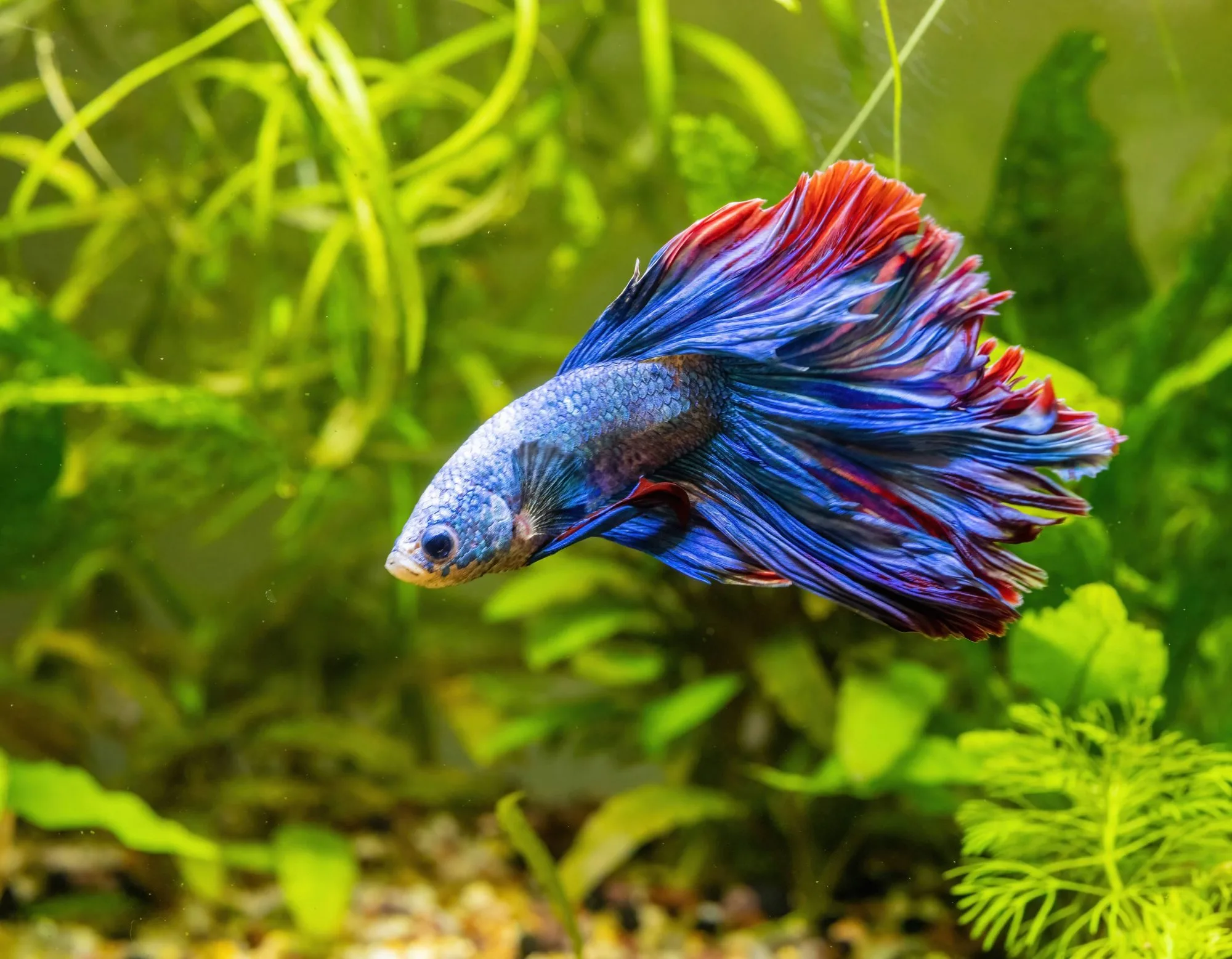If you’ve ever been captivated by the vibrant colors and flowing fins of a small fish in a pet store, chances are you were looking at a betta. These stunning freshwater fish are among the most popular choices for new and seasoned aquarium lovers alike. Whether you’re a parent looking for a child’s first pet or someone who wants a beautiful, low-maintenance addition to their desk or home, betta fish for sale offer the perfect combination of beauty and simplicity.
Before you dive into the world of fishkeeping, it’s important to understand what makes bettas unique, where to find bettas for sale, and how to give them the proper care they deserve.
Meet the Betta: Small Size, Big Personality
Betta fish (Betta splendens), also called Siamese fighting fish, are native to Southeast Asia. In the wild, they live in shallow, warm waters like rice paddies and floodplains. Over generations, bettas have been selectively bred for vivid colors and extravagant fins, creating a wide range of varieties to choose from.
But bettas are more than just eye candy. They’re intelligent, interactive, and often develop routines. Many betta owners say their fish learn to recognize them, swim toward the tank when approached, or even take food from their fingers. This makes them incredibly rewarding pets—especially in a solo setup.
Choosing the Right Betta Fish for You
When looking through bettas for sale, you’ll see a wide variety of colors, tail types, and price ranges. Here are a few of the most popular types:
- Veiltail: The classic betta with a long, draping tail.
- Plakat: A short-finned variety that’s more active and closer to wild bettas.
- Halfmoon: Recognized by their fan-like tail that spreads 180 degrees.
- Crowntail: Known for spiky fins that resemble a crown.
- Koi Betta: Their patterns resemble the beautiful koi fish, often with color-changing potential.
- Galaxy or Marble Betta: Fish with unpredictable and shifting patterns.
Every betta is different—some are more energetic, others more reserved. When buying, take a few moments to observe the fish. A healthy betta will be alert, active, and responsive.
Where to Find Betta Fish for Sale
The search for the perfect betta begins with knowing where to look. You can find betta fish for sale in several places, each with pros and cons:
1. Pet Stores
Large chain pet stores offer accessibility and convenience. However, fish in these stores are sometimes kept in small containers and may not be in optimal health. Look for stores that take fish care seriously.
2. Specialty Aquarium Shops
These shops typically offer better care, rarer varieties, and knowledgeable staff who can answer specific questions about the fish you’re buying.
3. Online Breeders
Online platforms provide access to exotic or show-quality bettas. Reputable breeders offer high-resolution images and even videos of individual fish, plus health guarantees and shipping protection.
4. Aquarium Expos & Local Hobbyists
Events and community groups often feature locally bred, well-cared-for bettas for sale. This is a great way to meet experienced breeders and get care tips firsthand.
Setting Up Your Betta’s New Home
Despite popular myths, bettas don’t belong in tiny bowls. For a healthy, happy life, they need proper space and water conditions.
Ideal Betta Tank Setup:
- Minimum tank size: 5 gallons
- Heater: Required to maintain a stable temperature of 76–82°F (24–28°C)
- Filter: Gentle water flow to avoid stressing the fish
- Lid or cover: Bettas can jump!
- Plants and décor: Provide hiding places and reduce stress
Live or silk plants (like anubias or java fern) and smooth decorations make great additions to a betta tank. Avoid sharp edges that could tear their delicate fins.
Feeding Your Betta
Bettas are carnivorous and need a protein-rich diet. Feeding them correctly helps keep them vibrant and active.
Feed Options:
- Betta pellets: Formulated with the right nutrients
- Frozen or live foods: Bloodworms, brine shrimp, and daphnia as treats
- Freeze-dried foods: Use in moderation and soak before feeding
Feed your betta 1–2 times a day, only what they can eat in 2–3 minutes. Overfeeding can lead to bloating and water issues.
Betta Behavior and Social Needs
Bettas are solitary by nature—especially males, who can be aggressive toward other males and similar-looking fish. That’s why they’re often housed alone. But solitary doesn’t mean boring! Bettas enjoy interaction with their environment and owners.
You might notice your betta:
- Building bubble nests (a sign they’re content)
- Flaring (spreading fins wide, often near a mirror or reflection)
- Resting on plant leaves or decorations
- Swimming to greet you during feeding time
These behaviors are signs of a healthy, enriched fish.
Can Bettas Live with Other Fish?
In certain setups, yes. But compatibility depends on space, temperament, and tankmates. Some safe options for community tanks (10 gallons or more) include:
- Corydoras catfish
- Snails (like Nerites or Mystery snails)
- Amano or ghost shrimp
- Small, non-aggressive schooling fish like Ember Tetras
Avoid other bettas, fin-nippers, or flashy fish that may provoke aggression.
Regular Maintenance and Care Tips
To keep your betta thriving:
- Do weekly water changes (25–30%)
- Test water parameters using test strips or kits
- Clean uneaten food and waste to prevent ammonia buildup
- Observe your fish daily for signs of illness like color fading, fin clamping, or unusual swimming
Bettas can live 3–5 years—or longer with excellent care.
Final Thoughts: Bringing a Betta into Your Life
Betta fish aren’t just beautiful—they’re engaging pets that bring personality and color into any space. Whether you’re browsing tanks in a pet store or exploring rare varieties online, there’s no shortage of stunning betta fish for sale.
Before buying, take time to prepare the right environment. A well-kept tank and informed owner make all the difference. And as you explore listings with bettas for sale, remember: the perfect betta is out there waiting to meet you.
With the right setup, a little knowledge, and a lot of heart, your betta can become the centerpiece of a thriving underwater world—and a source of daily joy for years to come.










